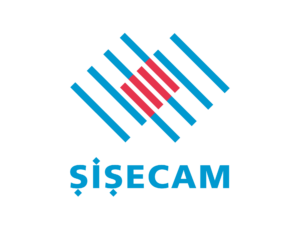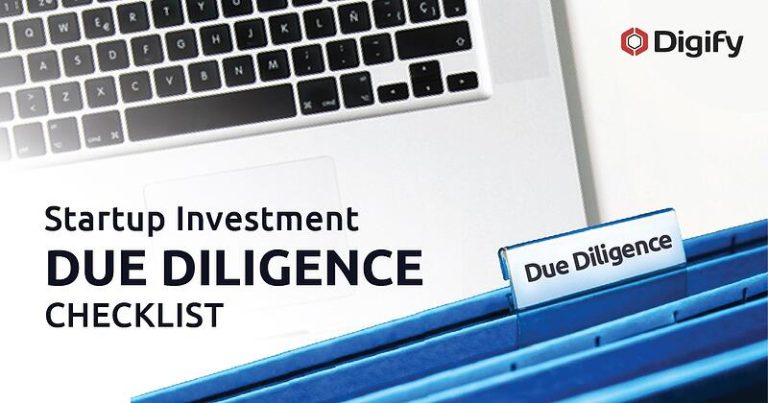Introduction to Fund Performance Metrics
Reporting fund performance metrics accurately is essential for making well-informed investment decisions. This is especially true in the world of venture capitals (VC), where institutional investors, family offices, and high-net-worth individuals rely on clear and consistent data to assess the potential and progress of their investments.
Whether you are part of an investor relations team, a fund manager, or a financial advisor, you need a solid foundation in these key metrics—and an effective way to communicate them. From satisfying regulatory requirements to building trust with limited partners (LPs), here’s how you can ensure your fund performance reporting stands out.
Regulatory Requirements and Industry Standards
1. SEC Reporting Requirements
If you are running a registered fund, you may need to file monthly or quarterly reports. The U.S. Securities and Exchange Commission (SEC) requires certain funds to file portfolio reports on Form N-PORT within 30 days of each month-end.
2. ILPA (Institutional Limited Partners Association) Guidelines
ILPA publishes best practices to encourage standardization and transparency in private equity. These guidelines touch on capital calls, distribution notices, and recommended formats for performance reporting.
3. GIPS (Global Investment Performance Standards)
Global Investment Performance Standards (GIPS) are a set of ethical principles established by the CFA Institute. If you claim compliance, you must typically show at least five years of audited performance, ensuring that reporting methods remain consistent and comparable.
LP Expectations for Transparency and Accuracy
Today’s LPs are increasingly sophisticated and demand the following:
- Consistent reporting across their portfolio to facilitate quick comparisons.
- Attribution analysis to see how each investment drives overall returns.
- Track record verification to confirm the accuracy of historical performance data.
Meeting these expectations helps you position your fund for future fundraising. A strong track record, proven performance persistence, and the ability to showcase robust returns relative to peer groups can influence the size and terms of subsequent vehicles.
Building Trust with Stakeholders
Fund performance metrics are not just numbers; they are tools for storytelling and trust-building.
- Consistent communication reassures LPs, even during challenging periods.
- Contextualization of performance variations helps LPs see beyond a single point in time.
- Expectation management fosters healthier, more transparent relationships with your investors.
In this article, we will explore the primary quantitative metrics used to evaluate venture capital fund performance, including IRR, DPI, TVPI, RVPI, and MOIC. We’ll also show how these metrics shift over a fund’s lifecycle, outline best practices for communicating with LPs, and highlight how Digify can help streamline the entire reporting process.
Key Fund Performance Metrics and Their Calculations
1. Internal Rate of Return (IRR)
Definition and Formula
The Internal Rate of Return (IRR) is the discount rate that sets the net present value (NPV) of all cash flows—both in and out—to zero. Expressed mathematically:
0 = CF₀ + CF₁/(1+IRR) + CF₂/(1+IRR)² + … + CFₙ/(1+IRR)ⁿ
CF = cash flow at a specific time interval (i)
n = total time in years
Why It’s Important
IRR provides an annualized rate of return, taking both the timing and magnitude of cash flows into account. It helps LPs understand how quickly the fund’s investments are growing.
Things to Know
- Interim vs Final IRR: While the fund is active, the Interim IRR includes both realized and unrealized returns. Final IRR reflects only realized returns once the fund closes.
- Credit Facilities: If the fund uses credit lines to delay capital calls, the IRR can be artificially inflated. The timing of cash flows changes, which in turn can boost IRR in the short term.
- Early Fund Life: IRR is often negative during Years 1-4 (the “valley of death”) as capital outflows exceed any distributions.
Example
Imagine you invest $5,000 today and receive $2,000 at the end of the Year 1, $3,000 at the end of Year 2, and $2,000 at the end of Year 3. Plugging these flows into an IRR formula yields an annual IRR of about 15%.
What It Shows
IRR reveals how profitable an investment is on a time-adjusted basis, making it a go-to figure for LPs, evaluating multiple funds or investment opportunities.
2. Distributions to Paid-In Capital (DPI)
Definition and Formula
DPI measures how much cash has been returned to investors relative to how much they contributed. The formula:
DPI = Cumulative Distributions / Paid-In Capital
Why It’s Important
DPI is one of the most concrete metrics: it focuses on actual cash returned to investors. A DPI above 1.0x indicates that investors have received back at least their initial investment.
Things to Know
- Clawback Provisions: These safeguard LPs if excessive carried interest was distributed early. GPs may need to return a portion of their carried interest if their final performance does not meet certain thresholds.
- GP Givebacks: If a fund underperforms, GPs might return some profits to ensure fair distribution.
Example
If the fund has called $100 million in total and, over time, has returned $160 million to LPs, its DPI is 1.6x.
What It Shows
DPI reflects real money in LP’s pockets, making it a straightforward measure of a fund’s success to date.
3. Total Value to Paid-In Capital (TVPI)
Definition and Formula
TVPI incorporates both realized and unrealized returns:
TVPI = (Current NAV + Total Distributions) / Total Paid-In Capital
Why It’s Important
Unlike DPI, which focuses only on distributed cash, TVPI includes potential upside from unrealized investments. It offers a broader view of how the fund is performing overall.
Things to Know
- Recycled Capital: If a fund reinvests distributions back into new or existing portfolio companies, that recycling impacts both the numerator (if it boosts NAV) and the denominator (if it increases paid-in capital).
- Short-Term vs. Long-Term: A high TVPI early on might mostly be paper gains, while a lower TVPI may not adequately reflect a fund that’s still in its growth phase.
Example
If your fund’s Current NAV is $100 million and you’ve already distributed $60 million to LPs while they contributed $100 million in total, your TVPI is:
TVPI=(100+60)100=1.6xTVPI=100(100+60) =1.6x
What It Shows
TVPI helps LPs gauge both the returns they’ve already received and the future potential remaining in the fund’s portfolio.
4. Remaining Value to Paid-In Capital (RVPI)
Definition and Formula
RVPI measures unrealized, or “on-paper,” returns:
RVPI = Net Asset Value (NAV) / Paid-In Capital
(Some sources present the formula inversely, but the concept remains the same.)
Why It’s Important
RVPI highlights the portion of the fund’s investments that remain unrealized. LPs use this to understand how much of the value is still tied up in active or partially-exited positions.
Things to Know
- Early Years vs Later Years: Early in the fund’s life, RVPI tends to be high because most capital is still at work and remains unrealized. If RVPI remains high after the fund is well into its lifecycle, this might signal slower exits.
- Valuation Methodologies: Since RVPI depends on Net Asset Value, it relies on how the GP values underlying portfolio companies. Conservative vs aggressive valuations can significantly affect this figure.
Example
If LPs contributed $75 million and the fund’s NAV is $150 million, your RVPI is 2.0x, indicating that twice the contributed capital is still on paper.
What It Shows
RVPI offers investors insight into how much of their capital is still invested. It signals future potential exits and distributions.
5. Multiple on Invested Capital (MOIC)
Definition and Formula
MOIC measures how many multiples of the original investment have been generated:
MOIC = Total Value / Invested Capital
Why It’s Important
MOIC is a straightforward snapshot of returns, especially useful for comparing individual deals in a portfolio. It can be broken down into gross (excluding fees) and net (including fees) MOIC.
Things to Know
- Time Value of Money: MOIC does not account for the time factor, so a 3.0x multiple achieved in two years differs substantially from a 3.0x achieved over ten years.
- Unrealized Values: MOIC can include valuations of active investments, so any inaccuracy in NAV can skew the result.
Example
If you invest $50,000 in a startup and your current valuation plus distributions sum up to $150,000, your MOIC is 3.0x.
What It Shows
MOIC can quickly reflect which investments deliver the highest returns. However, it must be paired with time-sensitive metrics (like IRR) to offer a complete view of performance.
Fund Performance Metrics Across the Fund Lifecycle
The J Curve Effect
In private equity and venture capital, funds often exhibit a “J Curve,” where returns are initially negative (due to setup costs and unproductive capital outlay) and then, if successful, trend upward in later years.
Years 1-4: Portfolio Construction
- Negative Early Returns: During the first few years, funds incur management fees, legal fees, and due diligence costs.
- Conservative Valuations: Early-stage investments may be written down if performance is not immediately evident.
- Metrics Impacted:
- IRR: Often negative.
- DPI: Typically zero, as exits haven’t occurred yet.
Years 4-7: Value Creation
- Operational Improvements: Portfolio companies begin to mature, raising new rounds at higher valuations.
- Early Exits: Some successful investments might be sold for a profit, boosting distributions.
- Metrics Impacted:
- TVPI: Often starts to rise as NAV and initial distributions increase.
- DPI: Moves away from zero as realized gains start rolling in.
Years 8+: Realization and Harvest
- Significant Exits: Companies reach maturity, are often acquired, or go public, converting paper gains to cash.
- Validation of Early Valuations: With realized exits, IRR is finalized for those deals.
- Metrics Impacted:
- DPI: Central metric, reflecting how much capital has been returned.
- IRR: If the fund’s successes outweigh any failures, the IRR trends upward or stabilizes.
Best Practices When Communicating Fund Performance Metrics to LPs
Provide Context and a Narrative
Fund performance metrics alone do not tell the whole story. Always link changes in IRR or TVPI to real events:
“Our IRR increased to 22% this quarter due to the successful Series C round of Portfolio Company A and strong revenue growth across our enterprise software holdings.”
This goes beyond numbers and reveals the underlying drivers of performance. It helps LPs evaluate the sustainability of these gains.
Use Multiple-Based Metrics in Tandem
Share TVPI, DPI, and RVPI together:
“This quarter, the fund’s TVPI stands at 2.1x, made up of 0.8x DPI and 1.3x RVPI. We expect the unrealized portion to convert into distributions over the next 12–18 months as our late-stage companies reach exits.”
This gives LPs a clearer sense of what’s already been realized and what might still materialize.
Contextualize Performance Over Time
Performance evolves. Show your LPs a historical timeline:
“Our TVPI grew from 1.8x to 2.1x this quarter, driven by two factors: a $50 million exit of Company A (adding 0.2x to DPI) and a Series D funding of Company B (adding 0.1x to RVPI).”
Linking improvements to specific events or operational enhancements demonstrates your team’s active role in driving returns.
Break Down Performance Attribution
LPs appreciate an attribution analysis, showing how much of your returns come from:
- Operational Value Creation: Improved margins, increased market share.
- Exit Execution: M&A or IPO strategies that maximize exit value.
- Market Positioning: Benefiting from broader industry trends or higher multiples.
“Of our current 2.1x TVPI, 0.8x comes from direct operational improvements in key portfolio companies, 0.7x from strategic exits, and 0.6x from our focus on enterprise software, which has seen significant expansion.”
Establish a Consistent Reporting Frequency
Regular and timely reporting fosters trust. For instance:
“We issue quarterly performance updates within 45 days of quarter-end, detailing changes in IRR, TVPI, DPI, and RVPI. If a major exit or funding event occurs, we publish an interim update to keep you informed in real-time.”
Prompt, predictable communication helps LPs plan their own cash flows and investment strategies.
Common Challenges in Reporting Fund Performance Metrics
- Data Accuracy and Consistency
- Ensuring the exact timing and amount of cash flows for IRR calculations can be complex.
- Frequent updates mean multiple versions of performance data. Having a reliable system for version control is critical.
- Secure Distribution of Performance Information
- Meeting compliance requirements means ensuring the privacy of each LP’s data and underlying documentation.
- You might have varying permission levels for different stakeholders; a robust permission structure is essential.
- Real-Time Performance Updates
- LPs increasingly want immediate updates following major exits or valuation changes.
- Real-time data can be challenging to maintain without centralized dashboards or automated alerts.
How Digify Can Help
Using a secure data room or a unified investor reporting platform like Digify streamlines the complexities of delivering consistent, real-time performance metrics. Here’s how:
- Unified Investor Reporting Platform
- Track IRR, TVPI, DPI, RVPI, and MOIC in one place.
- Offer regular notifications so LPs receive proactive alerts about major exit events or distributions.
- Single Source of Truth
- Eliminate confusion by maintaining one definitive version of each metric.
- Keep a detailed audit trail of every document revision, essential for ensuring regulatory compliance.
- Version Control
- Update your pitch decks or performance reports without risking older versions circulating.
- Offer clarity and consistency when discussing key metrics like fund performance changes over time.
- Granular Access Control
- Set permissions per LP or group, so each stakeholder sees only the relevant performance data and underlying records.
With these capabilities, Digify positions itself as a practical and affordable solution that balances simplicity with control. Many VCs leverage platforms like Digify to enhance their investor communications, meet compliance requirements, and project a professional image.
By mastering the calculation and communication of VC fund performance metrics—including IRR, DPI, TVPI, RVPI, and MOIC—you give LPs the clarity and confidence they need to remain committed to your fund. Coupled with a secure platform like Digify, you can streamline data management, maintain version control, and build ongoing trust through transparent, timely, and context-rich reporting.
Leverage these best practices in every stage of your fund lifecycle to demonstrate professional rigor, enhance your credibility, and secure your place as a trusted partner in the eyes of your investors.
With Digify’s free trial, you can test these features and see firsthand how simplified, secure reporting can elevate your investor relations strategy.









